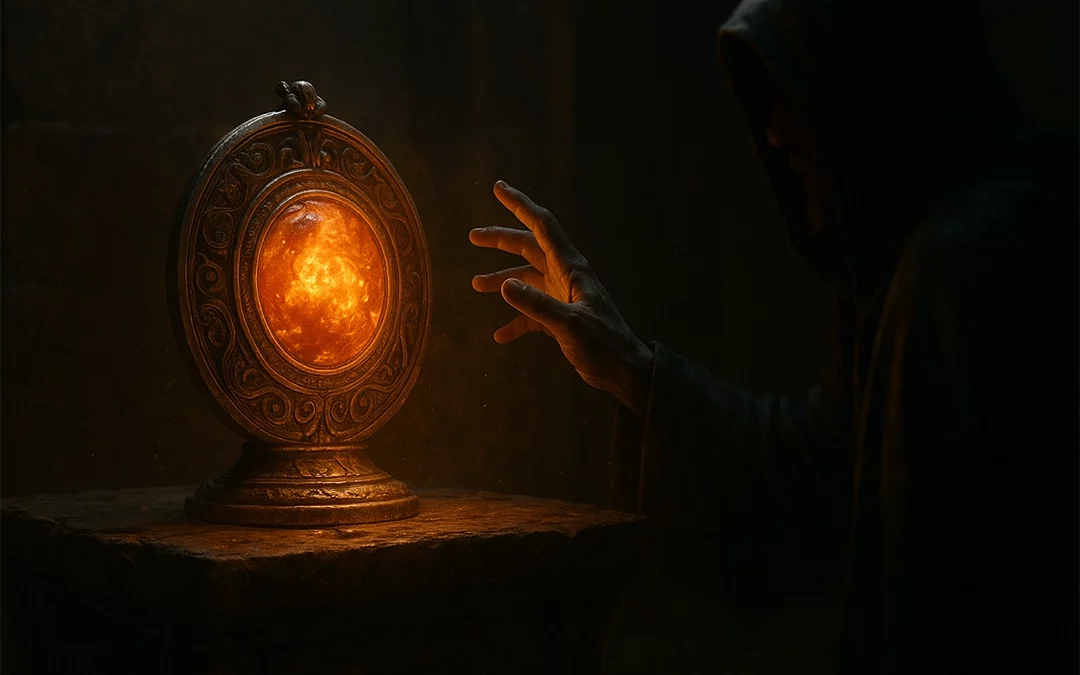Picture a dim crypt, torchlight flickering, and a lone hero reaching toward a glowing relic whose power is whispered across legends.
That relic isn’t just decoration—it’s the story’s heartbeat. From rings to swords, amulets to horns, magical artifacts (or MacGuffins) often do more than sit in vaults: they provoke obsession, corruption, sacrifice—and sometimes redemption.
This article explores why magical artifacts remain one of fantasy’s most enduring tropes: their deep origins, how they function in stories, where they go wrong, and (most importantly) which artifacts linger in our imaginations long after we close the book.
What Is a Magical MacGuffin—and What Makes It Special?
A MacGuffin, in storytelling lingo, is an object that characters pursue, protect, or fear—often because its nature or power drives the plot. The twist in fantasy is that many of these objects become more than mere plot devices: they carry history, identity, corruption, or agency.
In practice, a “magical artifact” might start as a MacGuffin—you chase it, you retrieve it—but then reveal itself to be a living force, cursed, sentient, or bound to destiny. What distinguishes a powerful artifact from a simple plot device is when the object shapes character, theme, and conflict—not just teleporting from point A to B.
Roots in Myth and Legend
The artifact trope is older than books, woven into the fabric of myth.
- The Golden Fleece is a quest object in Jason and the Argonauts, driving a perilous expedition.
- The Holy Grail in Arthurian tradition (from Chrétien de Troyes onward) is a sacred relic whose powers and meaning remain elusive.
- In mythologies worldwide, objects like swords, talismans, or magical mills (machines that generate wealth or food) appear repeatedly. For example, the Finnish epic Kalevala features the Sampo, a magical device that grants prosperity; the struggle over its ownership becomes central to the narrative.
- Legends of swords of kings—like Excalibur, tied to sovereignty and destiny—also feed directly into the fantasy lineage.
- These early artifacts often symbolized divine favor, ancestral right, or cosmic balance—and fantasy picks up that weight and runs with it.
Why Artifacts Work (and Why We Love Them)
Magical artifacts hit several sweet spots in storytelling:
- Instant stakes and motivation. Once the object is introduced, many characters automatically want it (for power, protection, revenge, or salvation).
- Mystery and layering. The artifact’s full nature might be hidden. You learn its history, rules, and dangers little by little.
- Moral tests and character growth. Who uses the artifact? Who refuses it? Who is corrupted by it? These questions deepen character arcs.
- Symbolic resonance. A relic tied to ancient wars, fallen empires, or lost gods gives the world texture.
- Narrative flexibility. It can drive quests, betrayals, corruption arcs, or sacrifices.
If the artifact is designed well, it doesn’t feel like the story about the object—it is part of the story.
MacGuffin vs Artifact: Two Shades of Power
A pure MacGuffin is largely passive. Characters fight for it; it doesn’t fight back. (Think of it as a goal token.)
A true artifact might act, corrupt, resist, or carry a destiny. It’s not passive—it influences events and characters.
Tolkien’s One Ring is a hybrid: at first an object of stealth and invisibility, but later revealed as a corrupting, willful power. Many modern fantasy works lean fully into the “active artifact” side—ghostly swords, living crystals, or relics that whisper to their owners.
Where the Trope Can Stumble
Even beloved tropes have landmines. When the artifact is too easy to get, the story flattens. If it solves every problem (a “magic fix‑all”), it robs tension.
If characters chase it without personal stakes or motivation, it feels hollow. When the author never explains why it matters (or does so inconsistently), readers feel cheated.
Sometimes the artifact overshadows everything—the world, the characters, the themes. But when used wisely, the artifact enhances rather than overshadows.
Seven Artifacts That Live in the Reader’s Mind
- The One Ring (The Lord of the Rings) — Wields power, corrupts its bearers, shapes the fate of Middle-earth.
- The Philosopher’s Stone (Harry Potter) — A small relic promising immortality and power, driving both hero and villain.
- The Horn of Valere (The Wheel of Time) — A prophecy‑linked relic that can summon legendary heroes.
- The Locket Horcrux (Harry Potter) — More than a container—it warps, torments, and tests those who carry it.
- The Alethiometer (His Dark Materials) — A truth-telling device wrapped in cryptic symbolism; interpreting it demands insight.
- Stormbringer (Elric of Melniboné) — A sentient, soul-consuming sword that turns its wielder’s fate into his doom.
- Excalibur — The legendary sword that ties Arthur’s legitimacy, myth, and sovereignty.
Each of these artifacts brings complexity: power with cost, agency with danger, and meaning beyond their function.
How to Spot and Appreciate a Great Artifact
- Look for mystery: If it has unknown history, rules, or danger, you’ll feel its pull.
- See how characters react: Desire, fear, reverence, or refusal tell you more than its description.
- Notice tension: The artifact should create conflict—temptation, betrayal, or sacrifice.
- Watch for costs: A relic that demands a price makes every use meaningful.
- Think theme: Does the artifact reflect ideas in the story—corruption, legacy, power, mortality?
Magical artifacts are more than sparkly props. They’re the pulse of many fantasy stories: objects of desire, power, temptation, and danger. When handled well, they anchor quests, define character arcs, and reflect the deepest stakes of the story. We chase them alongside heroes, sometimes fearing what they’ll become—and that is magical in itself.
If you want, I can design a visual (banner-style) featuring a glowing relic, or draft social quotes and pull‑quotes from the article. Want me to mock those up next?

D.P. Martinez is a contemporary fantasy author specialising in urban fantasy and magical realism. He holds an M.A. in English Literature from the University of Greenwich, where he focused on Literary London. His research explored metaphorical representations of London in urban fantasy. He has written hundreds of articles and several books across both fiction and non-fiction.

